
How to Use AM2320 Humitidy and Temperature Sensor: Examples, Pinouts, and Specs
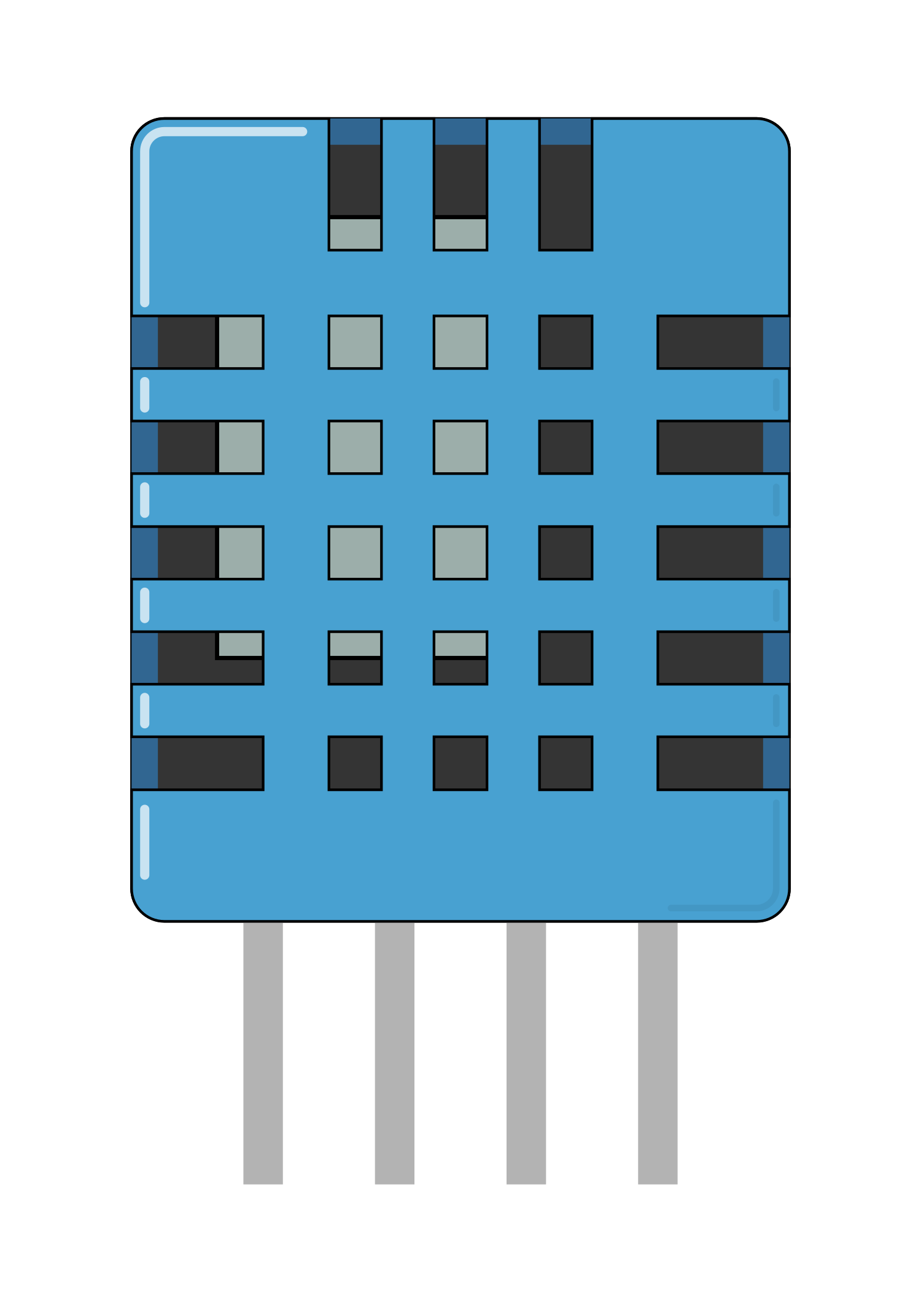
 Design with AM2320 Humitidy and Temperature Sensor in Cirkit Designer
Design with AM2320 Humitidy and Temperature Sensor in Cirkit DesignerIntroduction
The AM2320 is a digital temperature and humidity sensor that offers high reliability and excellent long-term stability. It features a low-power consumption design, making it suitable for battery-powered applications. The sensor uses the I2C communication protocol for data transmission, allowing for easy integration with microcontrollers such as Arduino, Raspberry Pi, and others. Common applications include weather monitoring systems, HVAC (heating, ventilation, and air conditioning) control, home automation, and other environmental sensing projects.
Explore Projects Built with AM2320 Humitidy and Temperature Sensor
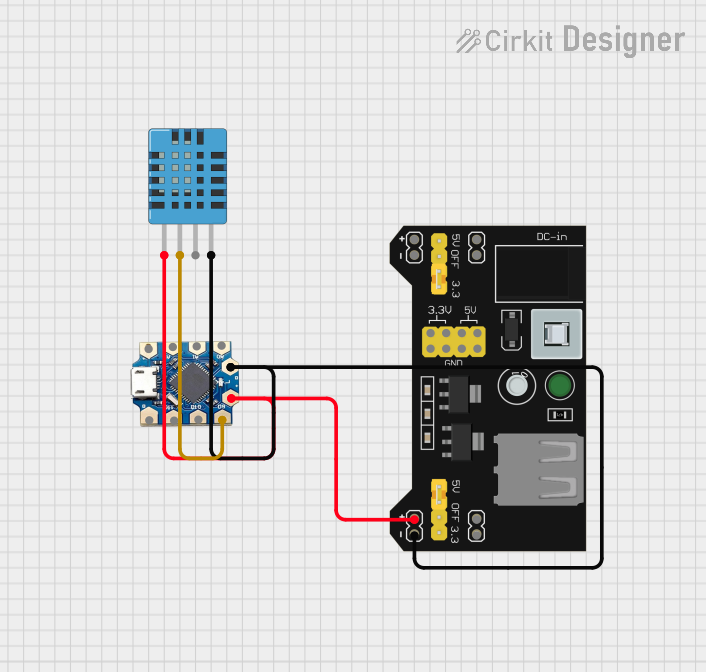
 Open Project in Cirkit Designer
Open Project in Cirkit Designer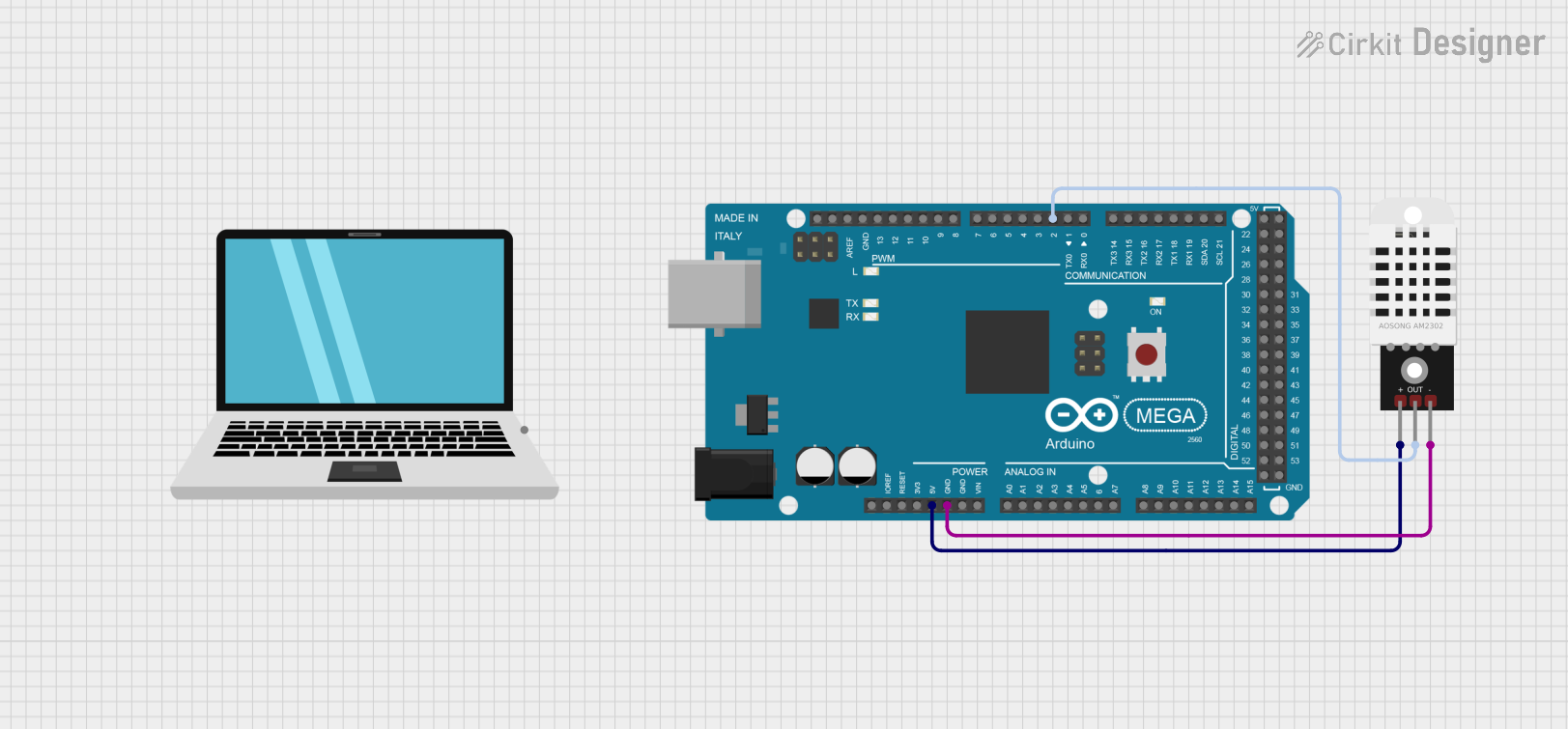
 Open Project in Cirkit Designer
Open Project in Cirkit Designer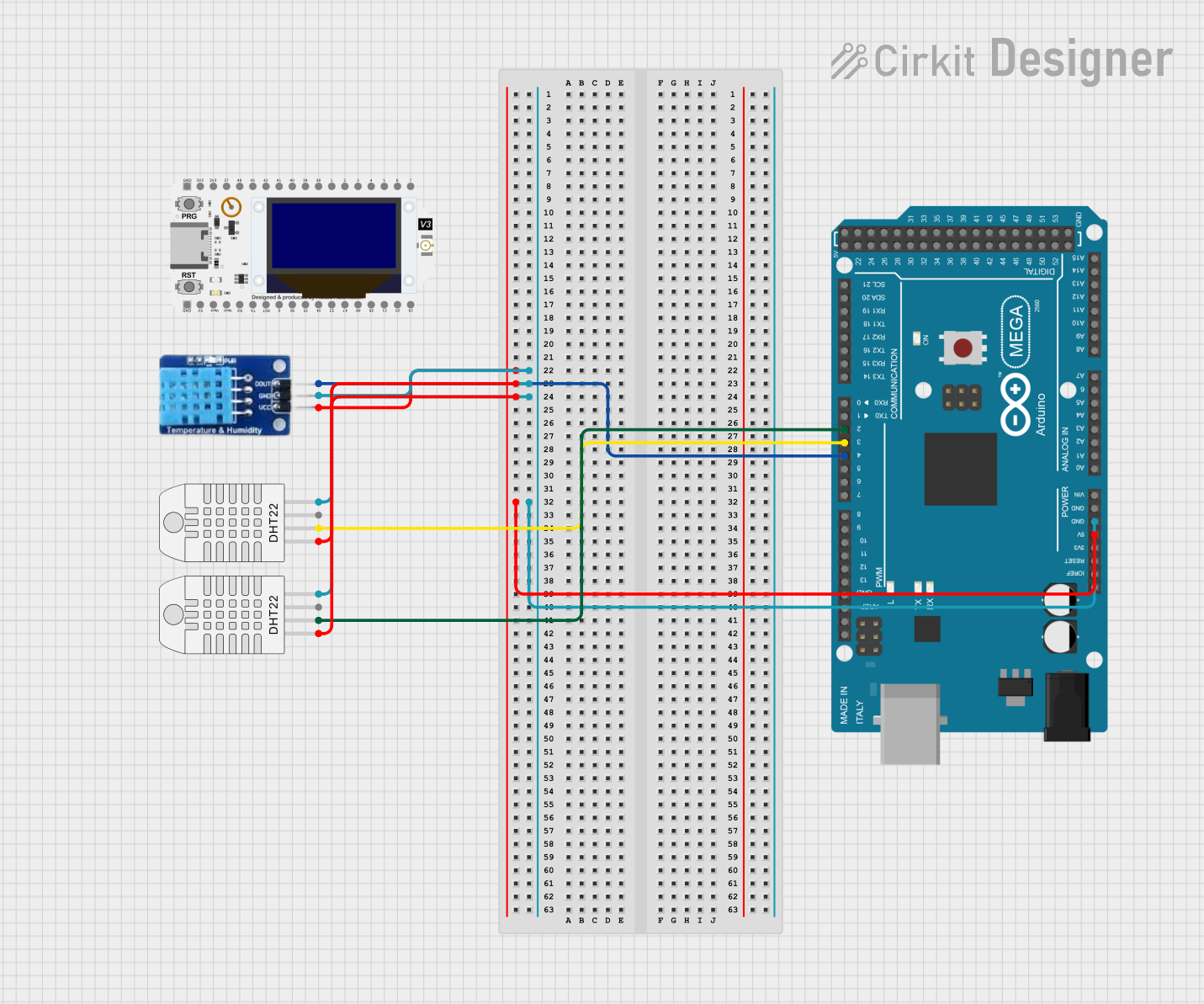
 Open Project in Cirkit Designer
Open Project in Cirkit Designer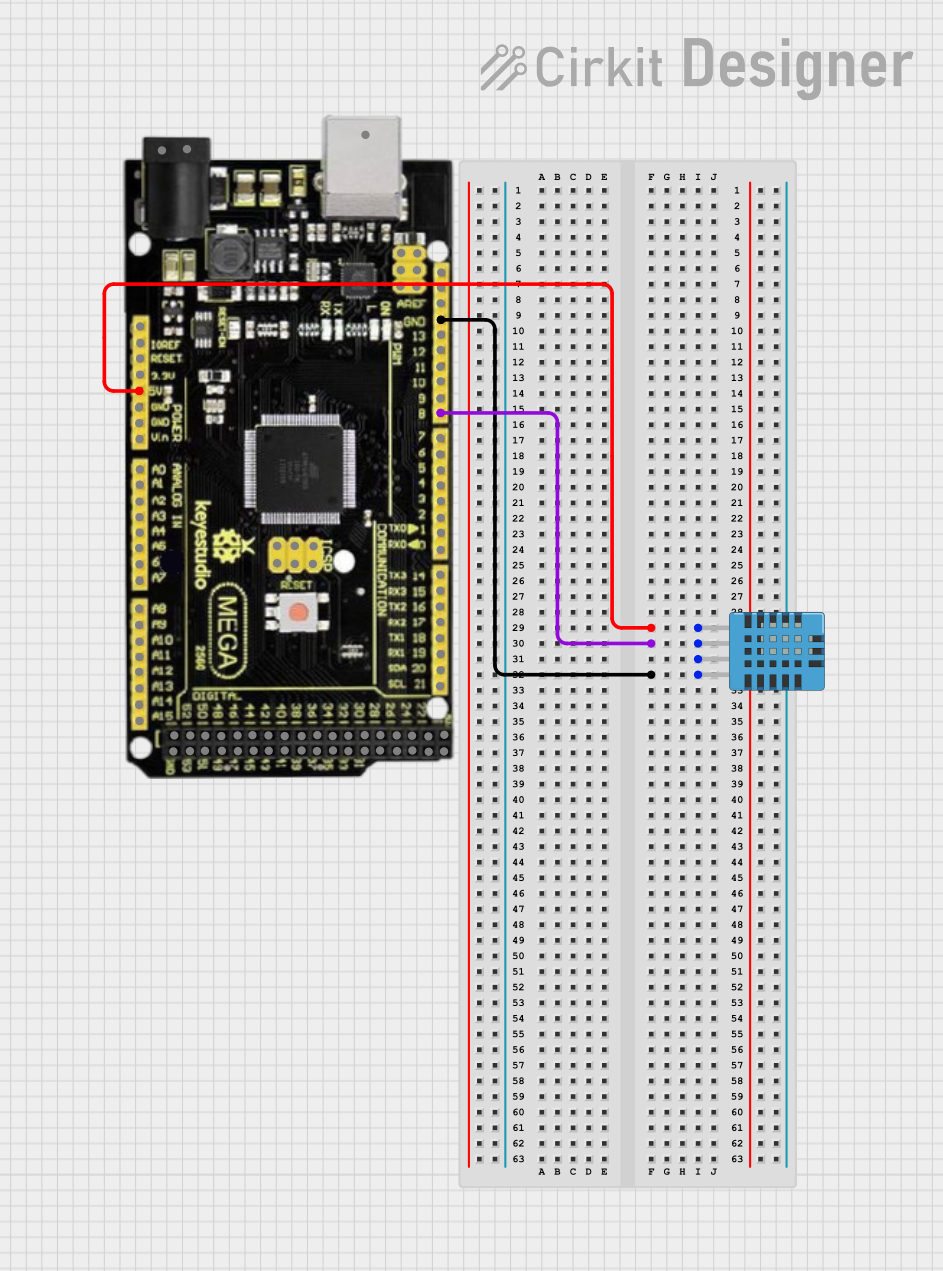
 Open Project in Cirkit Designer
Open Project in Cirkit DesignerExplore Projects Built with AM2320 Humitidy and Temperature Sensor

 Open Project in Cirkit Designer
Open Project in Cirkit Designer
 Open Project in Cirkit Designer
Open Project in Cirkit Designer
 Open Project in Cirkit Designer
Open Project in Cirkit Designer
 Open Project in Cirkit Designer
Open Project in Cirkit DesignerTechnical Specifications
Key Technical Details
- Supply Voltage: 3.1V to 5.5V
- Measuring Range (Humidity): 0 to 99.9% RH
- Measuring Range (Temperature): -40°C to +80°C
- Accuracy (Humidity): ±3% RH
- Accuracy (Temperature): ±0.5°C
- Resolution: 0.1
- Sensing Period: 2s
- Communication: I2C protocol
Pin Configuration and Descriptions
| Pin Number | Name | Description |
|---|---|---|
| 1 | VDD | Power supply (3.1V to 5.5V) |
| 2 | SDA | I2C Data |
| 3 | GND | Ground |
| 4 | SCL | I2C Clock |
Usage Instructions
Integration with a Circuit
- Connect the VDD pin to the power supply (3.1V to 5.5V).
- Connect the GND pin to the ground of the power supply.
- Connect the SDA and SCL pins to the I2C data and clock lines of the microcontroller.
- Ensure pull-up resistors are connected to the SDA and SCL lines if they are not provided by the microcontroller board.
Best Practices
- Place the sensor in a location that represents the environment's average temperature and humidity.
- Avoid exposing the sensor to direct sunlight or moisture.
- Use proper decoupling capacitors close to the sensor's power supply pins to filter out noise.
- Ensure that the I2C bus lines are not too long to prevent signal degradation.
Example Code for Arduino UNO
#include <Wire.h>
#include <AM2320.h>
AM2320 sensor(Wire);
void setup() {
Serial.begin(9600);
Wire.begin();
}
void loop() {
sensor.read();
Serial.print("Temperature: ");
Serial.print(sensor.temperature / 10.0);
Serial.println(" C");
Serial.print("Humidity: ");
Serial.print(sensor.humidity / 10.0);
Serial.println(" %");
delay(2000); // Wait for 2 seconds before reading again
}
Note: The above code assumes the use of an AM2320 library for Arduino, which simplifies the process of reading data from the sensor. Make sure to install the library before uploading the code to your Arduino.
Troubleshooting and FAQs
Common Issues
- Sensor not detected: Ensure that the sensor is correctly wired and that the I2C address is correct.
- Inaccurate readings: Check for any environmental factors that may affect the sensor's readings, such as direct sunlight or moisture.
- No data on serial monitor: Confirm that the correct baud rate is set in the Serial Monitor and that the Arduino board is properly connected to the computer.
Solutions and Tips
- If the sensor is not detected, double-check the connections and ensure that the pull-up resistors are in place.
- For inaccurate readings, recalibrate the sensor if possible or replace it if it is defective.
- Ensure that the Arduino IDE's Serial Monitor baud rate matches the baud rate specified in the
Serial.begin()function in your code.
FAQs:
Q: What is the I2C address of the AM2320? A: The default I2C address of the AM2320 is 0x5C.
Q: Can the AM2320 be used with a 3.3V system? A: Yes, the AM2320 can operate at a voltage as low as 3.1V, making it compatible with 3.3V systems.
Q: How long should I wait between measurements? A: The sensor requires a minimum of 2 seconds between measurements to ensure accurate readings.